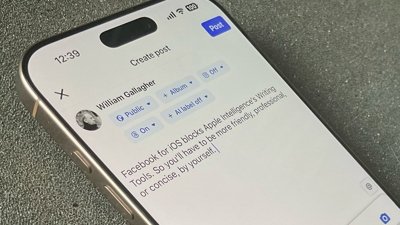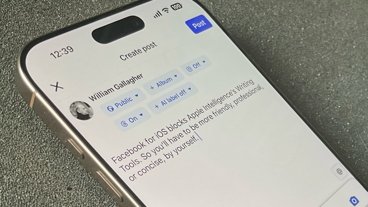Netflix is attempting to try and make its video streaming service accessible to its subscribers through lower-bandwidth connections, as well as minimizing buffering, with a new Dynamic Optimizer tool.
Demonstrated at Mobile World Congress, the Dynamic Optimizer analyzes each frame of a video to compress it as much as possible, reports Quartz. Two videos, one encoded normally at 555 kilobits per second (kbps) and another using Dynamic Optimizer at half the bitrate, are said to look identical, while another comparison showed the Dynamic Optimizer-encoded version of a video looks better at 100kbps than the existing technique at the same bitrate.
The tool is the product of a collaboration between the University of Southern California, the University of Nantes, and Netflix itself. An algorithm was trained by analyzing ratings given by viewers of thousands of shots, teaching it how to grade the quality of the encoded image, adjusting its encoding techniques, and improving the resulting video.
The automated encoding process means that various techniques can be applied to different types of content, and that the level of compression can be matched more closely to the video's needs. For example, different compression techniques may be needed for a fast-paced action scene in a move compared to simplified animations, with the latter able to maintain more of the image quality at lower bitrates.
"We can now optimize scene by scene with an almost infinite matrix of possibilities," said Ioannia Katsavounidis of Netflix's video algorithms team.
The Dynamic Optimizer will give Netflix another way to manage the video quality provided to its users. Katsavounidis told Engadget movies and TV shows are typically encoded at ten different bitrates, with users bumped down to lower bitrate streams if there are network issues, but using the new tool, users may not see a significant change in quality if they do end up being moved onto the low-bandwidth feeds.
Netflix did not advise on when the Dynamic Optimizer will be implemented on content, but advises it is trying to make the process "as automatic as possible" to cover its entire content library.
The push to offer higher quality video while conserving bandwidth helps Netflix and its customers in multiple ways. For mobile users, it means that less bandwidth is used for streaming video, and that the service could still be usable if subscribers find their connection limited after exceeding their bandwidth cap.
For viewers using set-top boxes, minimizing the bandwidth usage leaves the connection free for others in a household to use, while also potentially allowing 4K television owners with lower-speed broadband connections to view Ultra HD content.
In December, Netflix revealed it used 'chunk' analysis to optimize encoding for videos downloaded to iOS devices for offline viewing. The service splits a movie or TV show into 1- to 3-minute chunks, analyzing each to decide on the best way to encode the footage to minimize bandwidth and conserve device storage space.
Using this method, Netflix claims to save up to 19 percent of bandwidth and storage space compared to a visually indistinguishable streamed version.
 Malcolm Owen
Malcolm Owen

-m.jpg)






 William Gallagher
William Gallagher

 Andrew O'Hara
Andrew O'Hara
 Wesley Hilliard
Wesley Hilliard


 Marko Zivkovic
Marko Zivkovic





-m.jpg)




6 Comments
Is that image in the article from Netflix or chosen by the AI staff, because the image on the left isn't even close to the quality on the right, and not even close to any realitive designation of identical? Did I miss where it was referenced in the article?
Nice that they want to be able to push video out on a really slow line, now I'd like them to push it out to my 2009 iMac without having to use Flash.
Good luck. Just remember theory of signals and information. Looking forward to have quality on old dial-up speeds.